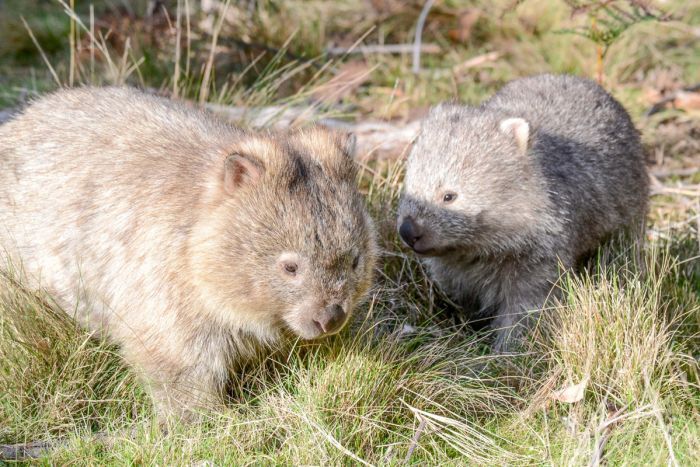
ACT Wildlife’s mange-treatment trial in Lanyon has been a success. Photo: Supplied.
Common agricultural chemicals, ACT election corflutes and old fashioned determination have combined to successfully combat deadly mange along the Murrumbidgee River at Lanyon, and now volunteers are looking to expand their work to another problem spot for the local wombat population.
The successful collaborative trial at Lanyon between ACT Wildlife and Parks and Conservation on treating mange means that a further project to manage an expanding problem on Cooleman Ridge is now likely to proceed if it gains funding and support.
ACT Wildlife president Marg Peachey said the recently concluded two-year trial had provided invaluable insights into how to deliver Cydectin drench effectively to sick wombats, and to understand how reinfection occurs in local populations.
“Cooleman Ridge is a very busy area where lots of people take their dogs for a walk, and we’ve been receiving reports for a while about the number of mangey wombats up there,” she said. “We’ve now identified where a lot of the burrows are, but there’s more work to be done on the size and distribution of the local population.”
Marg Peachey says that while the Lanyon trial happened in a relatively undisturbed area with little potential for impact on people and domestic animals, ACT Wildlife Rescue would need permission to carry out the treatment trial in the much more heavily populated area. It’s necessary, however, as mange now appears to be endemic in some local populations.
The treatment regime is simple: wombats respond readily to the right dose of Cydectin, a commonly available but relatively expensive agricultural drench. Getting the delivery mechanism right has been a matter of trial and error, but ACT Wildlife evolved an ingenious method involving, of all things, election corflutes.
The tough weather-resistant material is cut onto flaps that are installed on gates across burrow entries. The drench goes into a dispenser cup on the top of the gate that tips along the wombat’s backline as they go in and out.
The trial had a significant effect on the rates of mange in the Lanyon population, but Marg says that because wombats often re-use old infected burrows, the Lanyon trial has also taught researchers that treatment must be ongoing, rather than a process of complete eradication.
There’s a good roll-call of volunteers on hand to set up the gates but ACT Wildlife urgently needs either funds to purchase Cydectin or donations of the chemical, which is readily available at rural supplies stores.
What they don’t need, she says with a laugh, is more corflutes. “We’ve got enough of them to last forever after the last ACT elections. We even had someone roll up with the corflute advertising after sports grounds switched to electronic signs and we got the remainders.”
Sarcoptic mange is a skin infection in mammals that is caused by a burrowing parasitic mite. It affects more than 100 mammal species worldwide, including domestic animals, ringtail possums, brown bandicoots, koalas and common wombats.
Mange infection can result in aggressive scratching, hair loss, skin thickening and crusting, skin discolouration, open wounds (from scratching), weight loss and even death. The mite is thought to have arrived on the Australian continent with European settlement and wombats appear to be particularly susceptible to infestation.
“We’ve learned a lot from the Lanyon trial, but that was small biccies,” Marg Peachey says. “We’re ready to embark on something much bigger now.”
To make a donation or learn more about wombat mange in the ACT, visit ACT Wildlife .
Original Article published by Genevieve Jacobs on The RiotACT.









